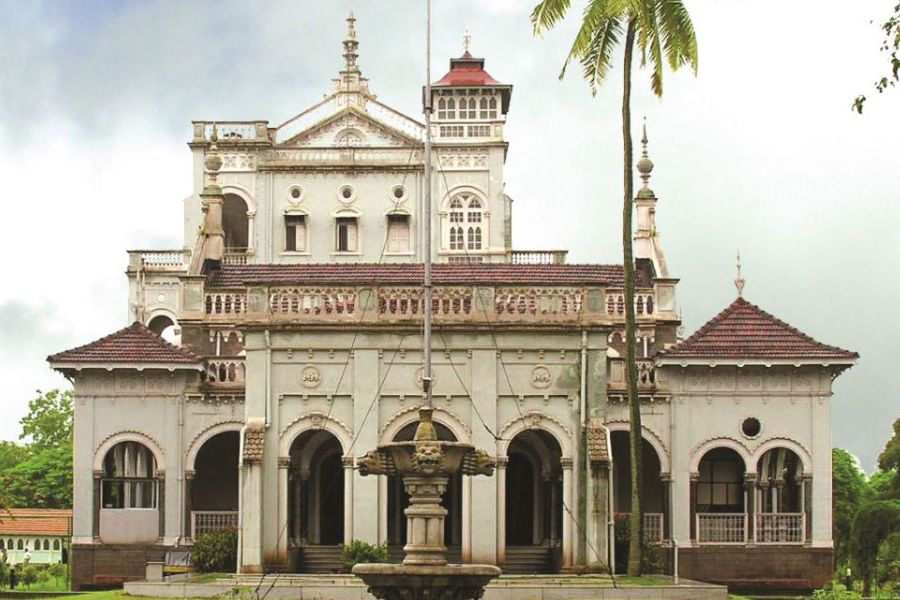Aga Khan Palace is a beautiful palace in Pune, India. It was built in 1892 by the Aga Khan III, the spiritual leader of the Nizari Ismaili Muslims. The palace is now a UNESCO World Heritage Site and a memorial to Mahatma Gandhi, who lived here during his final years.
Introduction: Nestled in the city of Pune, India, the Aga Khan Palace stands as a testament to both architectural beauty and historical significance. Built in 1892 by the Aga Khan III, this magnificent palace has witnessed the pages of history unfold within its walls. Today, it not only bears the prestigious UNESCO World Heritage Site status but also serves as a memorial to the Father of the Nation, Mahatma Gandhi, who resided here during his final years.
A Historic Haven: The Aga Khan Palace holds a rich history that dates back over a century. It was commissioned by Sultan Muhammed Shah Aga Khan III, an influential leader of the Ismaili community, to provide employment for the local population during a time of drought. Little did he know that this palace would go on to become a significant landmark in India’s freedom struggle.
Architectural Splendor: The palace showcases a fusion of Islamic and Italian architectural styles, creating a harmonious blend of elegance and grandeur. Spread across a sprawling estate, the palace boasts spacious courtyards, beautiful arches, and intricate artwork. Its structural design and vastness are a testament to the opulence of the bygone era.
The palace is located on 19 acres of land. It is surrounded by lush gardens and has a number of buildings, including the main palace, a guesthouse, and a hospital. The main palace is a two-story building with a central courtyard. It has a number of rooms, including Gandhi’s bedroom, a prayer room, and a dining hall.
The Gandhi Connection: The Aga Khan Palace holds immense historical significance as it served as a prison for Mahatma Gandhi, his wife Kasturba Gandhi, and other freedom fighters during the Quit India Movement in 1942. It was during his two-year internment that Kasturba Gandhi breathed her last, and Mahatma Gandhi himself fell ill. The palace thus carries the memories of sacrifice, resilience, and non-violent struggle.
Aga Khan Palace is a significant place in Indian history. It is a reminder of the struggle for independence and the sacrifices that were made. The palace is also a symbol of Gandhi’s commitment to non-violence and his belief in the power of love and compassion.
A Living Memorial: In 1969, the Aga Khan Palace was declared a national monument and a memorial to Mahatma Gandhi. The grounds house a museum that displays photographs, artifacts, and personal belongings of Gandhi, offering visitors an insight into his life and teachings. The tranquil samadhis (memorials) of Mahatma Gandhi and Kasturba Gandhi further enhance the sanctity of the place, providing a space for reflection and reverence.
Embracing Gandhian Ideals: The Aga Khan Palace not only commemorates the life and legacy of Mahatma Gandhi but also strives to promote his teachings. The palace complex hosts various educational programs, workshops, and exhibits that aim to spread the message of peace, non-violence, and social harmony. It serves as a beacon of inspiration for generations to come, reminding us of the power of truth, justice, and compassion.
Exploring Aga Khan Palace: Visiting the Aga Khan Palace offers a profound experience that intertwines history, culture, and spirituality. As you walk through the palace’s corridors, admire its architectural marvels, and witness the artifacts on display, you will be transported to a time when the struggle for freedom united a nation.
Here are some interesting facts about Aga Khan Palace:
- The palace was built in the Indo-Saracenic style of architecture.
- The palace was designed by a British architect named George Wittet.
- The palace was built using materials from all over India, including marble from Rajasthan, sandstone from Gujarat, and wood from Kerala.
- The palace has a number of beautiful gardens, including a rose garden, a lotus pool, and a herb garden.
- The palace is home to a number of rare and endangered plants.
- Aga Khan Palace is a popular tourist destination, and it is visited by thousands of people every year.
If you are interested in learning more about Aga Khan Palace, here are some things you can do:
- Visit the palace and take a tour.
- Visit the Gandhi Smarak Sangrahalaya, which is a museum dedicated to Gandhi’s life and work.
- Read a book about the history of the palace.
- Aga Khan Palace is a fascinating place to visit.
- It is a reminder of the rich history and culture of India, and it is a symbol of the struggle for independence. If you are ever in Pune, be sure to add Aga Khan Palace to your list of must-see places.
Conclusion: The Aga Khan Palace stands not only as an architectural gem but also as a testament to the spirit and resilience of a nation. Its significance as a memorial to Mahatma Gandhi ensures that his ideals and teachings continue to inspire and guide humanity. A visit to this majestic palace is a journey into India’s history, where the past merges with the present, leaving a lasting imprint on the soul. The Aga Khan Palace stands tall, carrying the legacy of Mahatma Gandhi and reminding us of the transformative power of peace and compassion.



